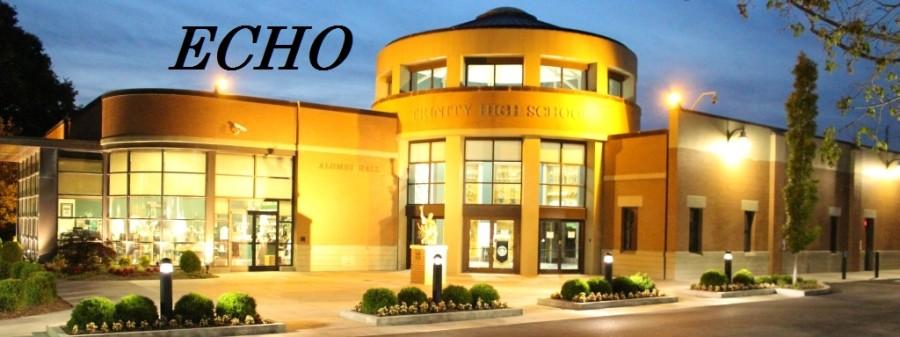‘Hype’ Tantalizes with Lights but Leaves Us in the Dark
November 18, 2019
The great rapper Nas said, “No idea is original; there’s nothing new under the sun; it’s never what you do, but how it’s done.”
Theater has been around for millennia. Musicals are all too common. Even theater productions about rap music have been performed.
Playwright Idris Goodwin, however, attempts a new genre of theater: a break beat play. In this form of art, dialogue and rap sequences flow together logically and in conjunction with the plot.
Goodwin’s “Hype Man: A Break Beat Play,” performed at Actors Theatre, attempts to start a new movement, yet the attempt leaves audiences disappointed. Although the production quality exceeds expectations and the play asks the right questions, vague characters, average music, and saturated themes ultimately undermine the important messages.
The play did excel at lighting, sound and set. Creative light sources, among them a neon “Tonight Show” sign and a rectangular light box for the concert scene, added to the ingenuity of the set. These lights set the mood: flashing lights for the “hyped” concert scene and a glowing white light for the rest.
It would have been nice if the lights corresponded with the rhythm of the music to create an immersive effect. Sadly, the lights were stationary. For a work about rap music, the sound had to be up to par; this was accomplished creatively with the mics: the sound box was used as a motif throughout the play to add humor and tension.
The small theater liberated the actors’ voices without amplification. In one of the introductory scenes, Verb (Mykele Deville) and Pinnacle (Shane Kenyon) try to figure out how to turn the mics on, creating a humorous sort of tension that provides a segue to introduce Peep One (Angelica Santiago).
For such limited stage space to work with, the set effectively utilized multiple venues, serving as a production studio, concert floor and the set of the “Tonight Show.”
In the heat of a concert scene, a hidden side door opened to reveal Verb leading a protest, complete with police lights in the background. This incorporated an additional element into the play that added depth and tension.
While the creativity of Goodwin’s attempt to fuse theater and rap succeeded in the production elements, an underdeveloped plot and grey characters left many disappointed and confused. This play focused on various themes, among them police brutality, the role of entertainers in politics, racial privilege, racial identity, and the treatment of women in the rap industry.
The theater offers the perfect place to draw attention to real-world issues, yet the plethora of topics in “Hype Man” only meant that none of them stood out. Instead of trying to cover a lot of ground without digging deeper (the gender issue was only mentioned in one scene), the play would have been much more effective if the writer had taken a deep dive on a select few.
Stereotypes and a lack of complexity detracted from what could have been an effective, thought-provoking play. Verb, for example, acted as the stereotype of the emotional, irrational, drug-addicted African-American man we see all too often in movies.
This discredited the valid conflict between his view of using the platform as a political voice and Pinnacle’s view of focusing on their careers.
Pinnacle, on the other hand, played the reasonable yet morally conflicted white man who doesn’t want to make his show a political voice. In 2019, artistic avenues are encouraged and expected to break away from societal norms, yet the characters in “Hype Man” failed to do so. By letting the audience easily recognize the messages the play attempts to address, the lack of real complexity made for a bland performance.
Goodwin’s play concluded with all three characters essentially joining in a big group hug, while the speaker, which was used throughout the play, cut out and died. The final scene left audience members walking out of the theater asking, “What? That’s it?”
Attempting to resolve conflicts by bringing everyone together in a sunshine ending of a 75-minute play was not a good idea.
The play was just too short to flesh out anything of substance. Questions were left unanswered.
What happened to Peep One’s role as a female sound creator?
Why did Pinnacle suddenly agree with Verb and decide to create a political song?
Most importantly, how did Goodwin create “something new under the sun,” yet leave viewers completely in the dark?

